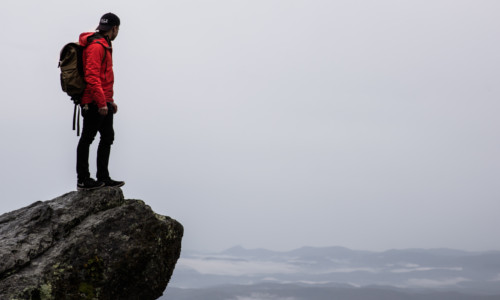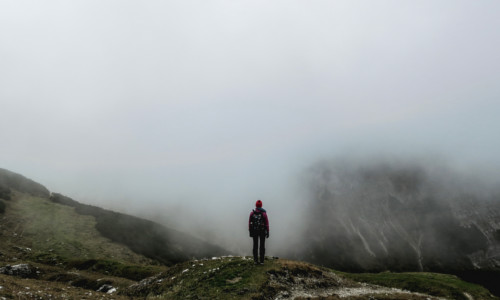How to Master Your Outdoor Layering System
Author

Chris shares his passion for cycling, hiking, skiing, and climbing from Buxton, in the Peak District. As a blogger for Outdoor Look, Chris shares outdoor tips and indoor tricks to help you get the most out of your time spent outside. When he's not out adventuring he's making videos or trying to keep up with his 4-year-old son.
 This is one of my favorite topics to bring up with hikers, especially because it adds an element of glamour to the camping experience. Let me walk you through the entire layering system and explore different angles of the hiking journey.
This is one of my favorite topics to bring up with hikers, especially because it adds an element of glamour to the camping experience. Let me walk you through the entire layering system and explore different angles of the hiking journey.
Pack the necessities and not the world inside your bag
Remember, you don't need to carry everything you own along with you on your trip. This is just one of your forthcoming adventures that you are undertaking, so keep in mind the location and the number of days that you are going to stay there. Also, sometimes it takes longer than usual to reach soaring heights, so bear in mind the weather conditions and that you might have to put a campsite temporarily on the way, keep the camp gear and several layers of clothing that you can keep as per requirement.
Base Layers are Important
Base Layers are those merino wool next-to-skin layers that absorb the moisture from your body. For example, if I want to carry one half-sleeve top with a full-sleeved T-shirt, and I'm wondering which one to pick, then I integrate both as they would then become three pieces of clothing rather than two separate layers. Base layers can be loose or tightly fitted, and most importantly they absorb the sweat when it's wet, and keeps you warm when it's frozen. I generally keep a long-sleeve and short-sleeve synthetic T-shirt, and tops in mid weight, which is comfortable enough for three seasons.
Light is right
Let me add this point of vests, here because an insulated and fleece vest will not only ventilate your arms during warm temperatures to avoid over-heating, but keep you moderately warm to suit the cool-to-very-cold weather. I would recommend that you invest in lighter layers which can be worn during a variety of seasons.
Water-resistant and Breathable Insulation
When I’m racing against the wind, I always pack Polartec Alpha and PrimaLoft based synthetic insulation that evaporates unnecessary moisture and dries quickly. These jackets and thermal wear are most preferred and helpful, in comparison to down jackets and fleeces, which are not breathable. Shell fabrics act as a repellent to drizzling as well, that adds to the protection of these clothes.
Sleeping Bag-cum-Puffy Jacket Combination
For a long time, campers have used backpacking gear which is multi-purpose, while reducing unnecessary weight from the bag. Carry a sleeping bag that doubles as a puffed-up jacket to swathe your body to the core with foldable and zipped arms and foot ends.
Geared up for Rains
The most suitable rain gear is the outerwear shell that protects you from the rain and is still quite breathable. A few examples are rain jackets, ultra-light rain shell and ultra-light wind shell jackets, and outerwear that repel rain yet keep your body warm and safe.
Accessories do Matter
Gaiters, gloves and hats are your best bet for accessorizing and keeping it stylish amidst frozen temperatures. Try these warmer accessories to cover your legs, hands and heads to protect them from getting dirty or cold blue.
Author

Chris shares his passion for cycling, hiking, skiing, and climbing from Buxton, in the Peak District. As a blogger for Outdoor Look, Chris shares outdoor tips and indoor tricks to help you get the most out of your time spent outside. When he's not out adventuring he's making videos or trying to keep up with his 4-year-old son.
- Speed Up Your Post-Hike Recovery with These 6 Essential Tips
- Cycling through Tranquil Roads and Coastal Views on the Isle of Wight
- The Essential Guide to Hiking Safety: 5 Tips Every Hiker Should Know
- Run Smart, Run Strong: Your Guide to Injury-Free Running
- Embrace Biking: Essential Tips for Beginners
Categories
- Sport (28)
- Product Reviews (3)
- Team Outdoor Look (7)
- Mike Wild (2)
- Mike Payton (2)
- Suse Hammond-Pears (3)
- Snowboarding (12)
- Latest Offers (105)
- Shop Talk (1)
- Competitions (7)
- Walking (413)
- Lifestyle Fashion (8)
- Travel (86)
- Kit Guides (176)
- Workwear Clothing (6)
- Safety Workwear (4)
- Health/Fitness (289)
- Skiing (91)
- Great Outdoors (1316)
- Cycling (92)
- January 2025
- December 2024
- November 2024
- October 2024
- September 2024
- August 2024
- July 2024
- June 2024
- May 2024
- April 2024
- March 2024
- February 2024
- January 2024
- December 2023
- November 2023
- October 2023
- September 2023
- August 2023
- July 2023
- June 2023
- May 2023
- April 2023
- March 2023
- February 2023
- January 2023
- December 2022
- November 2022
- October 2022
- September 2022
- August 2022
- July 2022
- June 2022
- May 2022
- April 2022
- March 2022
- February 2022
- January 2022
- December 2021
- November 2021
- October 2021
- September 2021
- August 2021
- July 2021
- June 2021
- May 2021
- April 2021
- March 2021
- February 2021
- January 2021
- December 2020
- November 2020
- October 2020
- September 2020
- August 2020
- July 2020
- June 2020
- May 2020
- April 2020
- March 2020
- February 2020
- January 2020
- December 2019
- November 2019
- October 2019
- September 2019
- August 2019
- July 2019
- June 2019
- May 2019
- April 2019
- March 2019
- February 2019
- January 2019
- December 2018
- November 2018
- October 2018
- September 2018
- August 2018
- July 2018
- June 2018
- May 2018
- April 2018
- March 2018
- February 2018
- January 2018
- December 2017
- November 2017
- October 2017
- September 2017
- August 2017
- July 2017
- June 2017
- May 2017
- April 2017
- March 2017
- February 2017
- January 2017
- December 2016
- November 2016
- October 2016
- September 2016
- August 2016
- July 2016
- June 2016
- May 2016
- April 2016
- March 2016
- February 2016
- January 2016
- December 2015
- November 2015
- October 2015
- September 2015
- August 2015
- July 2015
- June 2015
- May 2015
- April 2015
- March 2015
- February 2015
- January 2015
- December 2014
- November 2014
- October 2014
- September 2014
- August 2014
- July 2014
- June 2014
- May 2014
- April 2014
- March 2014
- February 2014
- January 2014
- December 2013
- November 2013
- October 2013
- September 2013
- August 2013
- July 2013
- June 2013
- May 2013
- April 2013
- March 2013
- February 2013
- January 2013
- December 2012
- November 2012
- October 2012
- September 2012
- August 2012
- July 2012
- June 2012
- May 2012
- April 2012
- March 2012
- February 2012
- January 2012
- December 2011
- November 2011
- October 2011
- September 2011
- August 2011
- May 2010
- April 2010
- March 2010
- February 2010
- January 2010
- November 2009
- October 2009
- September 2009
Submit a Comment